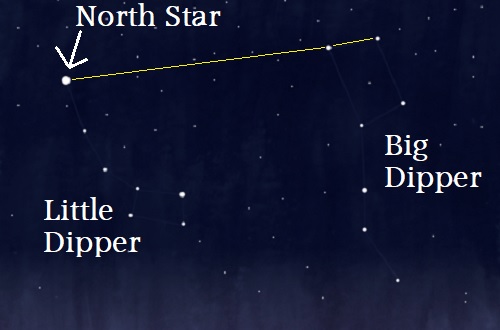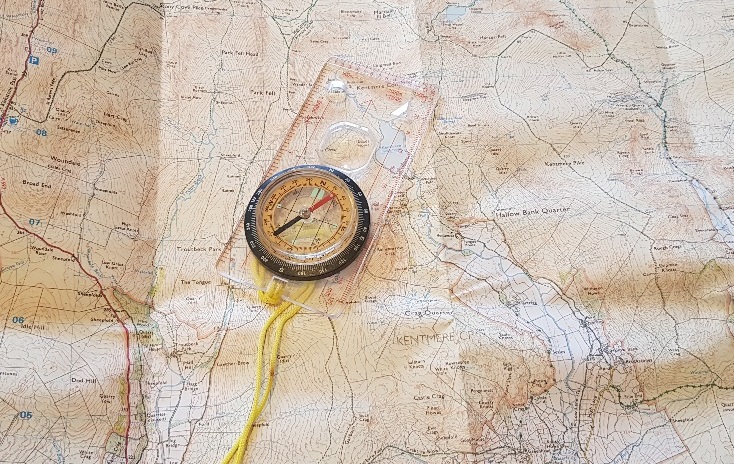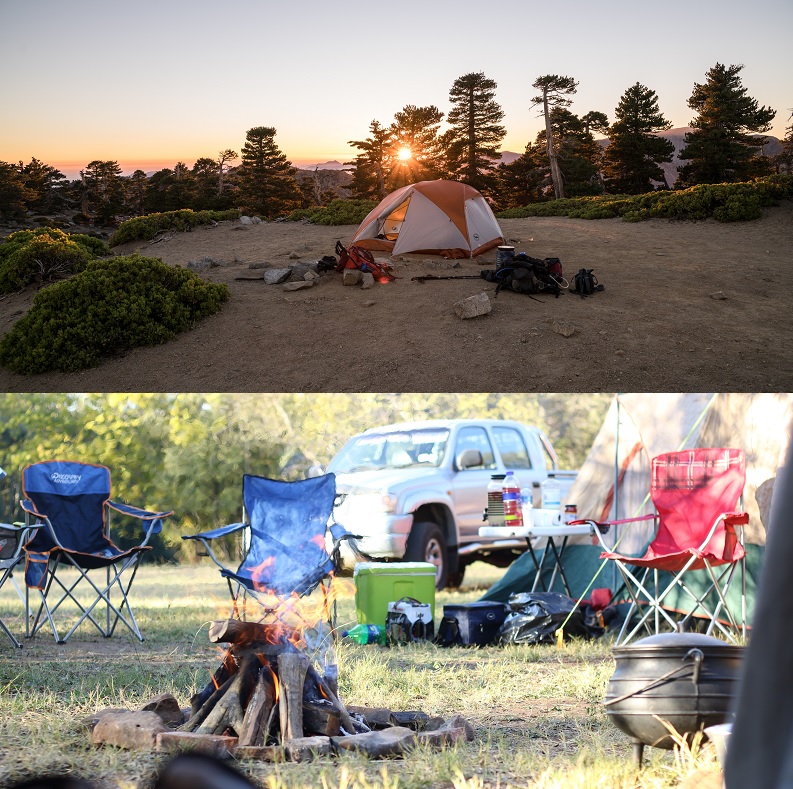GPS has become the most reliable and easiest way to find your way around while hiking in the wild. Some GPS units even give a layout of the land ahead so that you can adjust course if needed.
They are a great piece of kit but what happens when things start to go wrong. They can run out of battery, fall and break or simply get lost. I also lose signal from time to time when I’m in thick bush or deep in a valley.
We have being relying of this tech for so long that we have forgotten how to navigate without it. If you are going backpacking into the wild then it’s your responsibility to prepare for the unexpected, especially if you’re guiding others. Make sure you know at least one of the methods below and what you need to do before going.
Before You Leave
- Make sure your GPS is fully charged and is capable for the duration of your hike.
- Make sure you have a topographical map of the area you will be camping. Not on your phone, on paper.
- Every backpacker should have a compass.Keep it around your neck. Using a compass with your map is the best way to find your way around without a GPS.
- Check the weather forecast before you leave. Take note of the wind direction on each day you will be away. Write it down on something you will be taking with you, like the back of the map. Try to memorise it if you can.
- Study the map before you go and plan a route in detail.
- Before you start, take a moment to try to find any memorable landmarks. For example, an unusual out crop on a nearby mountain top. Anything that might help you identify your way back from a distance. Do this a few times a day. Don’t just walk with your head down.
- And lastly, tell someone where you are going and how long you will be away. If you get lost then just stay in the one place. Someone will eventually come and look for you and if they know where you are then you will be found quickly. Do not start wandering off into the wild without knowing which direction you’re going. This could move you miles from your planned route and make it harder to find you.
So now you should be well prepared for your backpacking adventure. That being said, do you really know how to use a compass? What if you forget your compass? Or what if you get separated from your gear and you have to rely on other forms of navigation to get you back to safety?
Below are 6 methods of navigating that will help you get around without a GPS. Sometimes I leave my GPS off and try to navigate using just my map and surroundings. If I mess it up I just turn my GPS on to take me back on track.
This is a good exercise for everyone to try. Especially if you do a lot of backpacking. You will become less reliant on your GPS. I’ve got a lot better than when I first started.
Oh, and I always have my compass around my neck. So if I do get seperated from my gear then I should still be able to know which direction I have to go to get to safety.
Using A Compass
This can be a complicated subject but I have taken the time to simplify it as much as possible.
- First you will need to determine which way you want to go. If you know that you have been travelling east and you want to make your way back then simply travel west. Relying on you compass alone won’t get you to exactly where you started but it will get you close enough so that you will recognise landmarks.
If you want to use a compass to travel, then you will have to learn how to use it with a map.
Determine direction
- First you need to you will have to draw a line on the map from where you are to where you want to go.
- Then orientate the map so that it is facing north. Place your compass on the map and rotate the compass until the north/south lines a parallel with the compass.
- You can then rotate the map until the compass is pointing north with the map. The map is now orientated so don’t move it.
- You can now move the compass, but not the map. Place the compass on the map along the line you have drawn. Your needle would have probably moved from the north on your compass but that is fine
- Without moving your compass, rotate the dial until the north (N) on the dial lines up with the north facing needle.
- The value that lines with the front of your compass is the direction you want to travel.
Get moving
- Now hold the compass away from your body and rotate it until needle is pointing at the north (N) on the dial.
- Your compass will now be pointing in the direction you want to go. Hold the compass up and try to sight a landmark if that direction. Walk to that landmark and do it again until you find where you want to go.
Some facts about using a compass
- A compass will point to magnetic north which is different to true north. A topographical map will tell you how much you have to adjust your reading so that will be traveling true north.
- A lot of people seem to think that a compass will point south of you are in the southern hemisphere but this is not true. A compass will also point north.
- Remember, you don’t follow the needle. You follow the compass. I don’t know how many people ask me about this and they think they follow the needle. The only time you would be following the needle is if you want to go north.
This I obviously a very simplified explanation of using a compass and map. Make sure you practice this and seek further advice before going deep into backcountry.
Using A Makeshift Compass
So what if your GPS stops working and you forgot your compass? Not to worry. It’s easy to make a compass that will tell you which way is north. You will then have to use your best judgment to decide which direction you need to walk.
- First thing you need is a needle or nail. Basically a small straight piece of wire. A straightened paper clip will also work.
- Most people will tell you that you need a magnet to magnetise your needle. This is true and it is the most effective way of doing it but it will be unlikely that you will have one with you when you’re backpacking. You can magnetise it by rubbing the needle on either silk or wool clothing.
- Rub the needle from head to tip, then lift and repeat from head to tip. Don’t just rub it up and down without lifting it. Do this 100 times.
- Now place the needle on a small leaf or piece of paper.
- And then place that leaf or paper into still standing water. A puddle or bucket of water will be perfect.
- Watch as the needle will turn and point north.
Now that you know which way is north you should at least know which way to go to find civilization. This is why it’s important to study the location before you leave.
Using The Stars
People have been using the stars for directions for centuries. There are nearly 60 different constellations and star patterns that the sailors used to use to find their way across the ocean.
It will depend where you are in the world which stars you should follow. For example if you are in the southern hemisphere then you won’t be able to see the north star.
These constellation will appear at different parts of the sky so you will have to do some research for where you live. Here is a more details article of the star constellations and which ones can be seen from your part of the world. For me, I only use 2 that help my keep on track.
The North Star (Polaris)
If you are in the northern hemisphere then the north star will be the most reliable star to use for navigation as is will be in the same place every night.
But how do you find it? It doesn’t really shine much brighter than the other stars so how do you pick it out?
- You’ll first need to find the big digger. This is easily identifiable due to its size and distinctive shape. Note that this could change orientation depending on the time of year. It could be upside down at times but the shape will alway stay the same.
- Once you find it follow an imaginary line from the outer edge stars until it comes closer to the little dipper.
- At the end of the little dipper’s handle there will a slightly brighter star. The imaginary line from the big dipper should intersect this star.
- This is the North star.

It sound hard but after a while you will be able to easily pick it out in just a few seconds.
Orion’s Belt
The North star is my go to star for navigation but I sometimes use Orion’s belt. It runs from east to west.
Using The Sun
Using the sun for navigation can be done but I don’t use it, as it’s just too hard to judge it accurately. You see, although most people will tell you that the sun rises in the east and sets in the west, this is just a rough direction.
It will depend on your latitude and the time of year. For example, the sun doesn’t even set for 6 months if you go north or south enough.
That being said I have being using a method lately that will give me direction with fairly accurate results.
- You will need a watch or a way of telling the time.
- You will have to determine the time it will be half way through daylight. For example, If the sun rises at 06.00 and sets at 20.00 then midday will be at 13.00.
- So at midday the sun will be south if you are in the northern hemisphere and north if you are in the southern hemisphere.
There is just too much variance to use the rise east and set west method.
Using the Land
Before you left for your backpacking adventure you should have taken the time to study the terrain. By knowing how long a valley is or if there is a mountain away off to the east, you will nearly be able to find your own way around. But this will depend on the terrain or if you will be in a heavily forested area. In places like this it can be easy to lose your bearings and once you lose where you are and it is very difficult to get back on track.
There are a few tricks that can help you get back to civilization.
- Use landmarks that are far away. If you know which direction you need to go the picking a landmark that is far away will reduce the likelihood of you walking in circles.
- Rivers are another surefire way to find help. Only use this method if you know the rivers in your area aren’t hundreds of miles long. If you don’t know and people know where you are then stay in the one place. However, if you have no choice following a river downstream will eventually bring you to some sort of settlement.
- Work with your surroundings. You could alway hike to the top of the highest mountain and try to sight your way out.
Using the Wind
This is kind of a last resort but if you know which way the wind is blowing then you will know which way is north. This is why I recommend recording or memorizing which way the wind is going to be blowing for every day you’re of camping.
- When using this method I sometimes like to pretend that I am the compass. I hold the map open in my hands directly in front of me.
- I want to be facing north for the map to make any sense so if I know the wind is blowing from the east then I will direct my right shoulder towards the wind.
- My map will now be facing north and as long as I know where I am on it I can then decide which way to go next.
I sometimes do this to impress my friends. They still wonder how I always know which way is north without using my compass.
Getting lost in the wild can be a scary experience. However, if you are properly prepared and stay calm you will be able to get yourself out of most situations.
If you have found this article helpful then please remember to share by clicking on one of the buttons below. It will help others find this article too.



